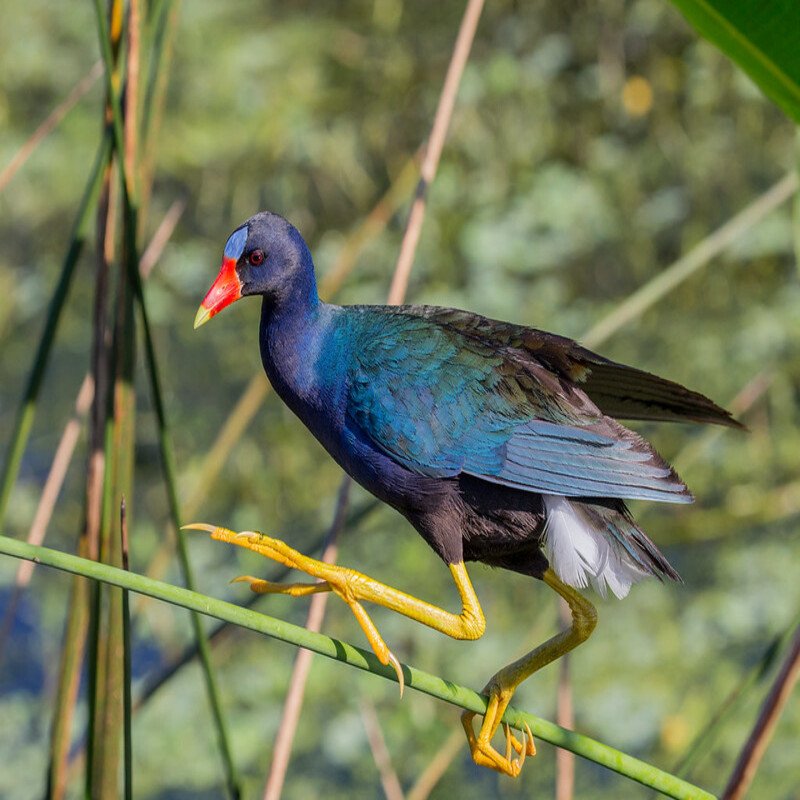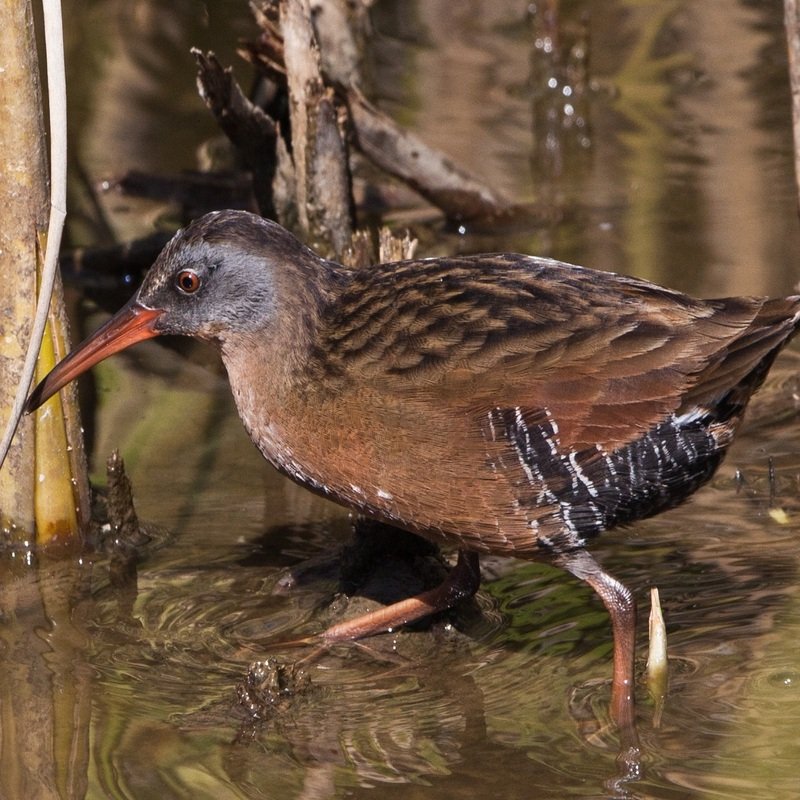The yellow rail, Coturnicops noveboracensis is a tiny marsh bird belonging to the Rallidae family. The Yellow Rail is a little marsh bird that dwells hidden among grassy foliage. It is one of the most difficult birds to see in North America. Yellow Rails, which are perfectly camouflaged in intricate patterns of black, brown, yellow, […]
Porphyrio Martinicus – Purple Gallinule
Purple gallinule, Porphyrio martinicus is a genus of swamphens. It is a member of the order Gruiformes, which also includes cranes, rails, and crakes. Purple gallinule is a rail species, belonging to the Rallidae family. Locally, it is referred to as the yellow-legged gallinule. Martinica is a particular epithet that means “of Martinique.” Quick Overview: […]
Gallinula Galeata – Common Gallinule
The common gallinule, Gallinula galeata is a species of bird belonging to the Rallidae family. The American Ornithologists’ Union separated it from the common moorhen in July 2011. It is found in the Americas near densely vegetated marshes, ponds, canals, and other wetlands. The species is absent from the polar regions and a large number […]
Porzana Carolina – Sora
The sora, Porzana carolina is a tiny waterbird belonging to the Rallidae family. It is also known as the sora rail or sora crake. Porzana and Carolina are both derived from Venetian names for little rails. Porzana alludes to the Carolina Colony. The name “Sora” is most likely derived from a Native American language. Quick […]
Rallus Elegans – King Rail
The king rail, Rallus elegans is the largest rail in North America. It is the largest rail system in North America. The rust-colored Rallus elegans is a large, slender marsh bird with a long bill and long toes. Quick Overview: Rallus Elegans – King RailBody size: Around 15 in (38 cm) and a weight of […]
Rallus Limicola – Virginia Rail
Virginia Rail, Rallus limicola is a tiny waterbird belonging to the Rallidae family. These birds remain rather numerous despite ongoing habitat degradation, but are naturally reclusive and are more frequently heard than seen. In several provinces and states, they are also considered a game species, though they are rarely hunted. Quick Overview: Rallus Limicola – […]






